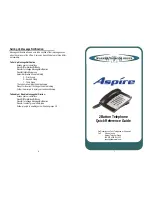
Avaya Application Solutions platforms
38 Avaya Application Solutions IP Telephony Deployment Guide
●
An Intel 960 processor complex. This complex is based on the architecture of the P330
data switch. This complex provides an eight-port Layer 2 switch function, and the i960
manages the Expansion and Cascade modules.
These major blocks are interconnected through two major communication paths: an Ethernet
link and the Time Division Multiplexed (TDM) bus similar to that in a port network. In addition,
the motherboard provides electrical and physical connectivity for four media modules.
VoIP Engine complex
The internal VoIP Engine block is where PCM voice samples are encoded and put into IP
packets, and vice-versa. This block implements all the functions that are normally associated
with a Gateway. Such functions include packet loss concealment, jitter buffer management, and
transcoding.
The VoIP Engine of the G700 motherboard has three major components: two Digital Signal
Processors (DSPs), and a Motorola MPC8260 processor. The DSPs together provide the same
VoIP channel capacities as the TN2302 Prowler circuit pack: 64 G.711 channels or 32 G.729
channels.
Each additional VoIP Media Module (MM760) increases the VoIP channel capacity of a G700
media gateway by the equivalent of a TN2302 circuit pack.
The G700 Media Gateway Processor
The G700 Media Gateway Processor (MGP) is the master controller of the Media Gateway. The
Motorola 860T processor in this complex implements the H.248 protocol to communicate with
the Gateway Controller. Under the direction of the Gateway Controller, the 860T Gateway
Processor controls the flow of data through the Gateway. The 860T processor communicates
with other processors in the system – the VoIP Engine processor, the i960 processor, and any
processors on media modules – through either the control channel of the TDM bus, or an
Ethernet link (the i960 processor connects only through Ethernet).
Functions implemented within the MGP complex include:
●
Management of the media modules (reset control, board and interface insertion, and so on)
●
Termination of the LAPD protocol running on the D-channel of E1/T1 trunks and BRI lines
and trunks (32 channels capacity).
●
Recorded announcement playback (15 playback channels, 1 record channel)
●
Tone detection and generation (15 ports of tone detection)
●
System clock generation and synchronization to an external network timing reference
●
Download agent for the media modules
●
License/translation storage
●
System maintenance
●
H.248 signaling
●
Connection management
Summary of Contents for Application Solutions
Page 1: ...Avaya Application Solutions IP Telephony Deployment Guide 555 245 600 Issue 3 4 1 June 2005 ...
Page 20: ...About This Book 20 Avaya Application Solutions IP Telephony Deployment Guide ...
Page 21: ...Issue 3 4 1 June 2005 21 Section 1 Avaya Application Solutions product guide ...
Page 22: ...22 Avaya Application Solutions IP Telephony Deployment Guide ...
Page 106: ...Call processing 106 Avaya Application Solutions IP Telephony Deployment Guide ...
Page 124: ...Avaya LAN switching products 124 Avaya Application Solutions IP Telephony Deployment Guide ...
Page 139: ...Issue 3 4 1 June 2005 139 Section 2 Deploying IP Telephony ...
Page 140: ...140 Avaya Application Solutions IP Telephony Deployment Guide ...
Page 186: ...Traffic engineering 186 Avaya Application Solutions IP Telephony Deployment Guide ...
Page 204: ...Security 204 Avaya Application Solutions IP Telephony Deployment Guide ...
Page 228: ...Avaya Integrated Management 228 Avaya Application Solutions IP Telephony Deployment Guide ...
Page 274: ...Reliability and Recovery 274 Avaya Application Solutions IP Telephony Deployment Guide ...
Page 275: ...Issue 3 4 1 June 2005 275 Section 3 Getting the IP network ready for telephony ...
Page 276: ...276 Avaya Application Solutions IP Telephony Deployment Guide ...
Page 356: ...Network recovery 356 Avaya Application Solutions IP Telephony Deployment Guide ...
Page 366: ...Network assessment offer 366 Avaya Application Solutions IP Telephony Deployment Guide ...
Page 367: ...Issue 3 4 1 June 2005 367 Appendixes ...
Page 368: ...Appendixes 368 Avaya Application Solutions IP Telephony Deployment Guide ...
Page 394: ...Access list 394 Avaya Application Solutions IP Telephony Deployment Guide ...
Page 414: ...DHCP TFTP 414 Avaya Application Solutions IP Telephony Deployment Guide ...
















































